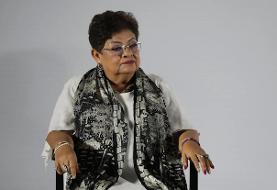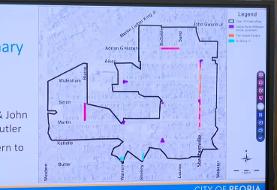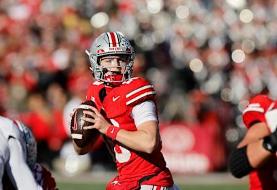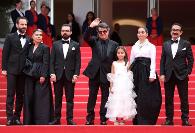Nowruz 1388
Nowruz 1388 will begin on March 20, 2009 at 03:03:58 PM (Tehran time):
| Tehran | Friday | 03:03:58 PM | March 20, 2009 |
| Los Angeles | Friday | 04:33:58 AM | March 20, 2009 |
| New York | Friday | 07:33:58 AM | March 20, 2009 |
| Chicago | Friday | 06:33:58 AM | March 20, 2009 |
| Stockholm | Friday | 12:33:58 PM | March 20, 2009 |
| London | Friday | 11:33:58 AM | March 20, 2009 |
| Paris | Friday | 12:33:58 PM | March 20, 2009 |
| Berlin | Friday | 12:33:58 PM | March 20, 2009 |
| Sydney | Friday | 10:33:58 PM | March 20, 2009 |
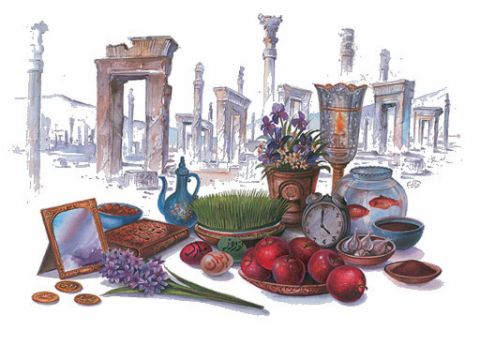
Nowruz History & Traditions
Nowruz, in word, means "New Day". It is the new day that starts the year, traditionally the exact astronomical beginning of the Spring. Iranians take that as the beginning of the year. This exact second is called "Saal Tahvil". Nowruz with its' uniquely Iranian characteristics has been celebrated for at least 3,000 years.
Iranians consider Nowruz as their biggest celebration of the year, before the new year, they start cleaning their houses (Khaane Tekaani), and they buy new clothes. But a major part of New Year rituals is setting the "Haft Seen" with seven specific items. In ancient times each of the items corresponded to one of the seven creations and the seven holy immortals protecting them. Today they are changed and modified but some have kept their symbolism. All the seven items start with the letter "S"; this was not the order in ancient times. These seven things usually are: Seeb (apple), Sabze (green grass), Serke (vinager), Samanoo (a meal made out of wheat), Senjed (a special kind of berry), Sekke (coin), and Seer (garlic). Sometimes instead of Serke they put Somagh (sumak, an Iranian spice).
Wheat or lentil representing new growth is grown in a flat dish a few days before the New Year and is called Sabzeh (green shoots). Decorated with colorful ribbons, it is kept until Sizdah beh dar, the 13th day of the New Year, and then disposed outdoors. A few live gold fish are placed in a fish bowl. In the old days they would be returned to the riverbanks, but today most people will keep them. Mirrors are placed on the spread with lit candles as a symbol of fire.
After the Saal Tahvil, people hug and kiss each other and wish each other a happy new year. Then they give presents to each other (traditionally cash, coins or gold coins), usually older ones to the younger ones. The first few days are spent visiting older members of the family, relatives and friends. Children receive presents and sweets, special meals and "Aajil" (a combination of different nuts with raisins and other sweet stuff) or fruits are consumed. Traditionally on the night before the New Year, most Iranians will have Sabzi Polo Mahi, a special dish of rice cooked with fresh herbs and served with smoked and freshly fried fish. Koukou Sabzi, a mixture of fresh herbs with eggs fried or baked, is also served. The next day rice and noodles (Reshteh Polo) is served. Regional variations exist and very colorful feasts are prepared.
Sizdah-Bedar
The 13th day of the new year is called "Sizdah Bedar" and spent mostly outdoors. People will leave their homes to go to the parks or local plains for a festive picnic. It is a must to spend Sizdah Bedar in nature. This is called Sizdah Bedar and is the most popular day of the holidays among children because they get to play a lot! Also in this day, people throw the Sabze away, they believe Sabze should not stay in the house after "Sizdah Bedar". Iranians regard 13th day as a bad omen and believe that by going into the fields and parks they avoid misfortunes. It is also believed that unwed girls can wish for a husband by going into the fields and tying a knot between green shoots, symbolizing a marital bond.
Chahar-Shanbeh Soori
Another tradition of the new year celebrations is "Chahar-Shanbeh Soori". It takes place before Saal Tahvil, at the last Wednesday of the old year, well actually Tuesday night! People set up bon fire, young and old leap over the fires with songs and gestures of merriment like:
- (Sorkhi-e to az man) Give me your beautiful red color
- (Zardi-e man az to) And take back my sickly pallor!
Nowruz Greetings
- Nowruz Mobarak (Happy Nowruz, Happy New Year)
- Eid-eh Shoma Mobarak (Happy New Year to you)
- Nowruz Pirooz (Wishing you a Prosperous New Year)
- Sad Saal be in Saal-ha (Wishing you 100 more Happy New Years)
References
- Nowruz, Wikipedia, the free encyclopedia.
- No-Rooz, The Iranian New Year at Present Times, Iranian Chamber Society.







